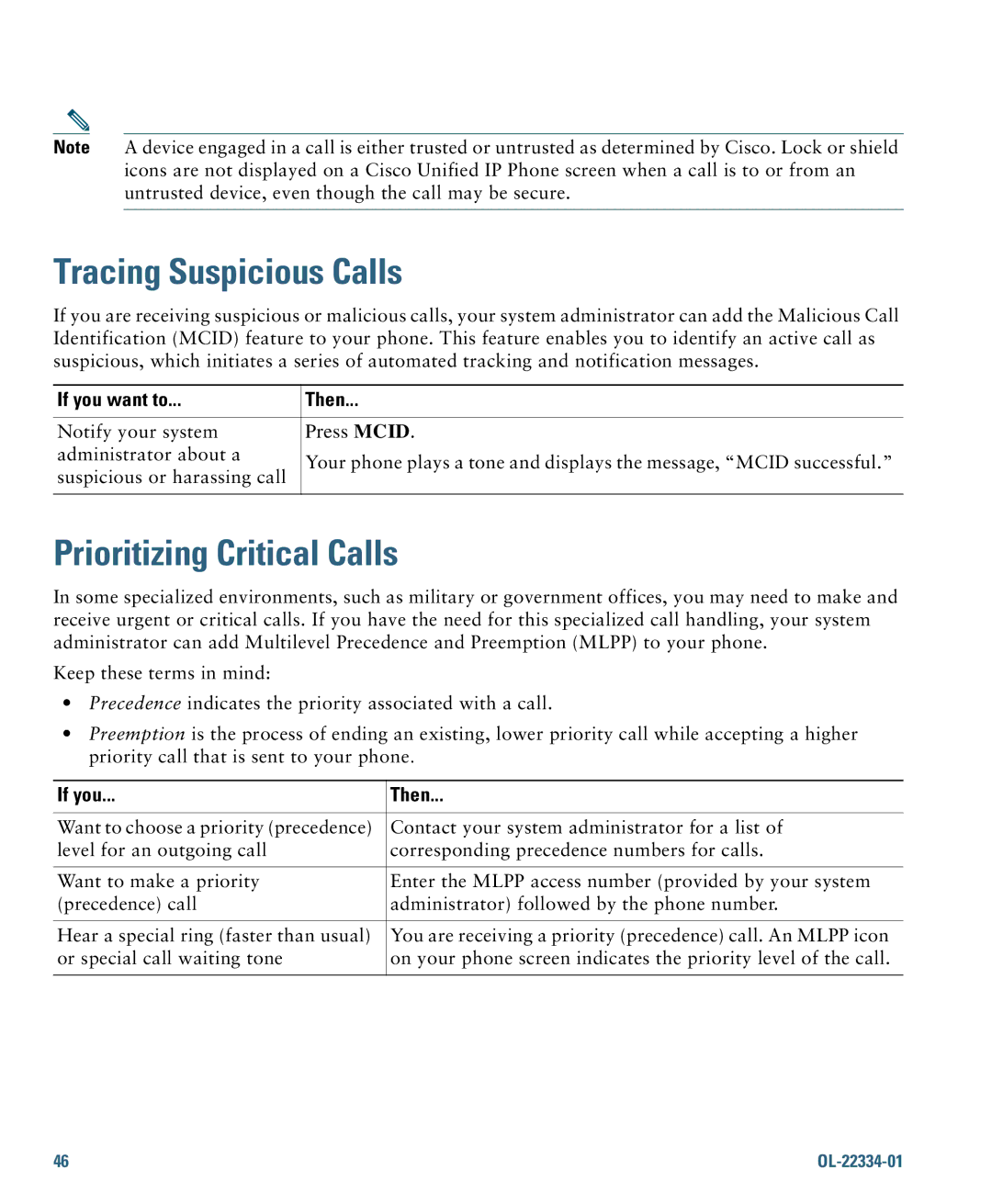
Note A device engaged in a call is either trusted or untrusted as determined by Cisco. Lock or shield icons are not displayed on a Cisco Unified IP Phone screen when a call is to or from an untrusted device, even though the call may be secure.
Tracing Suspicious Calls
If you are receiving suspicious or malicious calls, your system administrator can add the Malicious Call Identification (MCID) feature to your phone. This feature enables you to identify an active call as suspicious, which initiates a series of automated tracking and notification messages.
If you want to... | Then... | |
|
| |
Notify your system | Press MCID. | |
administrator about a | Your phone plays a tone and displays the message, “MCID successful.” | |
suspicious or harassing call | ||
| ||
|
|
Prioritizing Critical Calls
In some specialized environments, such as military or government offices, you may need to make and receive urgent or critical calls. If you have the need for this specialized call handling, your system administrator can add Multilevel Precedence and Preemption (MLPP) to your phone.
Keep these terms in mind:
•Precedence indicates the priority associated with a call.
•Preemption is the process of ending an existing, lower priority call while accepting a higher priority call that is sent to your phone.
If you... | Then... |
|
|
Want to choose a priority (precedence) | Contact your system administrator for a list of |
level for an outgoing call | corresponding precedence numbers for calls. |
|
|
Want to make a priority | Enter the MLPP access number (provided by your system |
(precedence) call | administrator) followed by the phone number. |
|
|
Hear a special ring (faster than usual) | You are receiving a priority (precedence) call. An MLPP icon |
or special call waiting tone | on your phone screen indicates the priority level of the call. |
|
|
46 |
|
